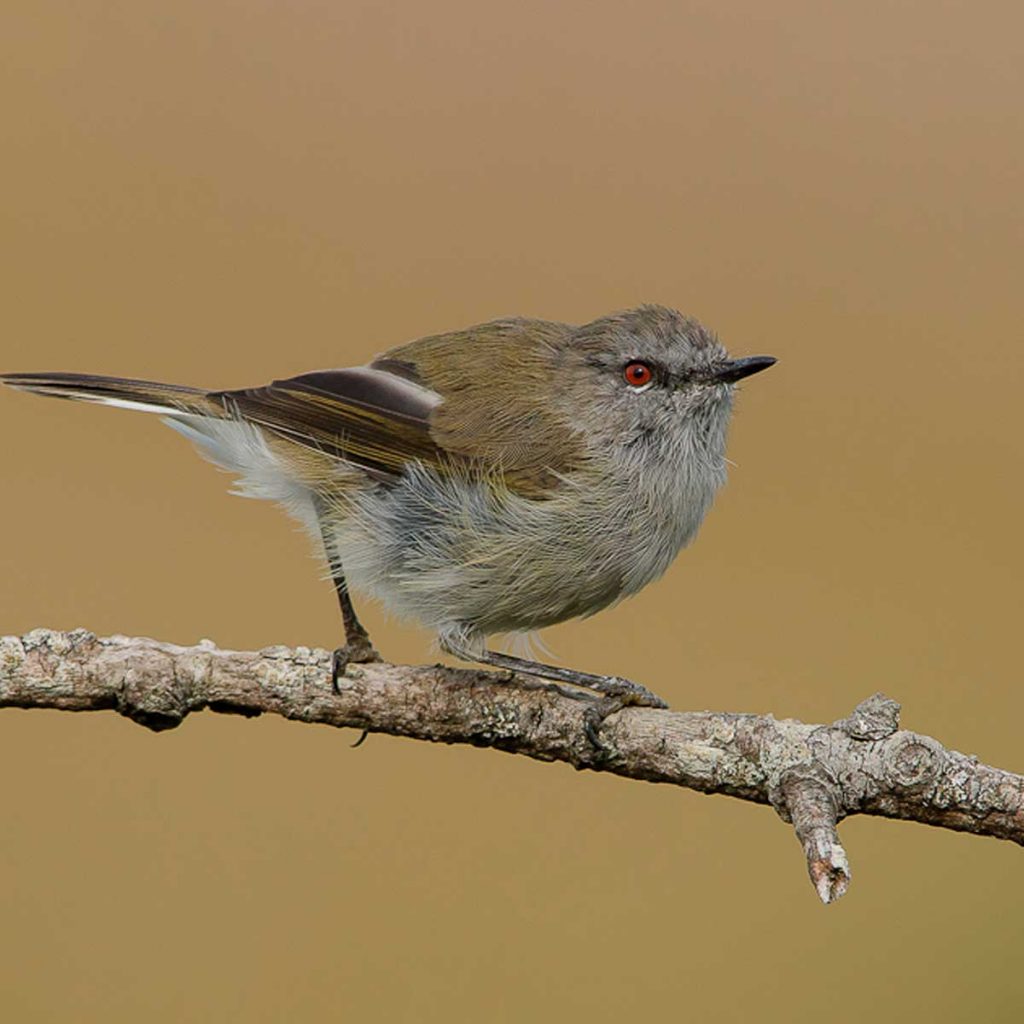
Birds / Grey Warbler
Information for Juniors
Grey Warbler
(Riroriro)
- The grey warbler is found throughout NZ
- Its natural habitat is forests
- Grey warblers are often heard more than they are seen
- Grey warblers mainly feed upon spiders, insects and their larvae
- They are very active, and almost never stay still as they move from one perch to another
- Grey build a pear-shaped nest with a side entrance near the top
- The female builds the nest from grass, leaves, rootlets and moss, held together with spider web threads, lined with feathers and other soft material
- The female lays 3 to 6 eggs, each laid 2 days apart, are pinkish-white with fine reddish-brown speckles all over
- Incubation takes about 19 days and the chicks spend another 15 to 19 days in the nest
- Their breeding season is from August to January
- There are usually two sets of chicks per year
What does it sound like?

Information for Junior Secondary
Grey Warbler
(Riroriro)
- The grey warbler’s natural habitat is temperate forests across NZ
- It is sometimes known as the rainbird
- Grey warblers are often heard more than they are seen
- Grey warblers mainly feed upon spiders, insects and their larvae. They are very active, and almost never stay still as they move from one perch to another
- Grey warblers build a pear-shaped nest with a side entrance near the top
- The male collects nesting material, but the female builds the nest from grass, leaves, rootlets and moss, held together with spider web threads, lined with feathers and other soft material
- The male is not involved in nest building or incubation but helps to feed nestlings and fledglings
- The 3 to 6 eggs, each laid 2 days apart, are pinkish white with fine reddish-brown speckles all over
- Incubation takes about 19 days and the chicks spend another 15 to 19 days in the nest
- Their breeding season is from August to January and they usually manage two clutches
What does it sound like?

Information for Senior Secondary
Grey Warbler
(Riroriro)
- The grey warbler is found throughout New Zealand
- Its natural habitat is temperate forests.
- Grey warblers are often heard more than they are seen
- Grey warblers mainly feed upon spiders, insects and their larvae. They are very active, and almost never stay still as they move from one perch to another
- Grey warblers are unique among New Zealand birds in building a pear-shaped nest with a side entrance near the top
- The male collects nesting material, but the female builds the nest from grass, leaves, rootlets and moss, held together with spider web threads, lined with feathers and other soft material
- It is attached to a twig at the top but is often also secured at the back or sides
- The male is not involved in nest building or incubation but helps to feed nestlings and fledglings
- The 3 to 6 eggs, each laid 2 days apart, are pinkish white with fine reddish-brown speckles all over
- The eggs, weighing 1.5 grams are about 17 millimetres long and 12 millimetres wide Incubation takes about 19 days and the chicks spend another 15 to 19 days in the nest
- Their breeding season is from August to January and they usually manage two clutches
What does it sound like?

Grey Warbler Activities
- Where would you look to find a Grey Warbler?
- What is the Grey Warbler’s favourite food?
- Listen carefully to the song and describe it in detail
- According to Maori tradition, what 2 practices that the Maori undertake by studying the grey warbler
- Draw the warbler’s nest that clearly indicates that you have studied it in detail. Then describe the reasoning that the nest is built in this fashion
